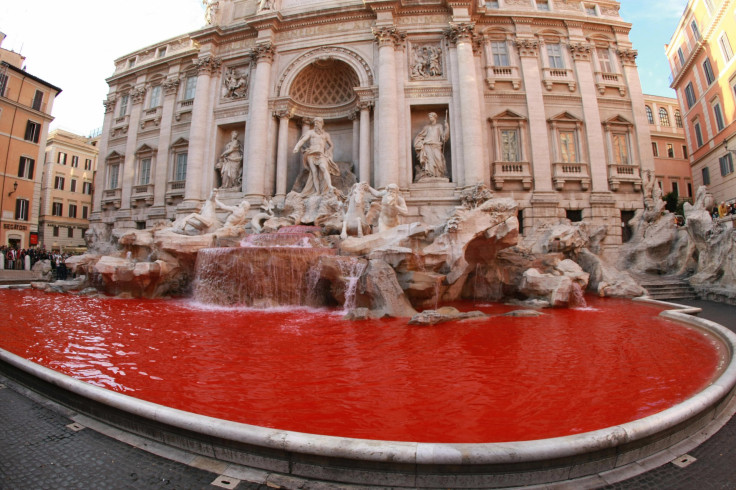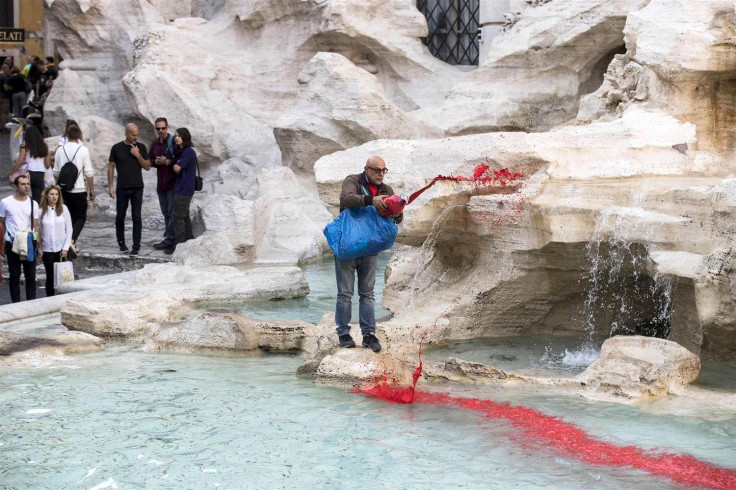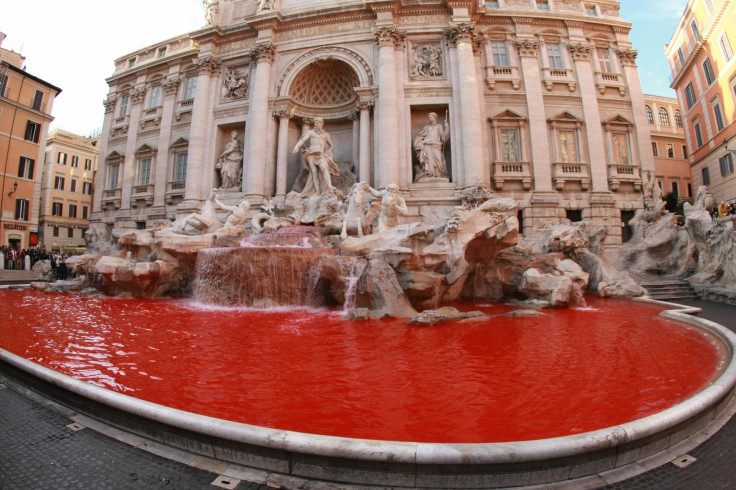Trevi Fountain Runs Red For The Second Time

The Trevi Fountain turned red Thursday in efforts to protest the "return (of Italy as) the capital of art, life and Renaissance."
Activist and "vandalism artist" Graziano Cecchini managed to climb into the iconic Roman monument and turn the pool into a blood red color, according to a Fox News report Thursday.
This act of protest by Cecchini came 8 days after the 10-year anniversary of the first time the fountain turned red. On Oct. 19, 2007, right-wing group claimed responsibility for turning the fountain red, and it was in protest of the Italian Film Festival — the red color was a reference to the red carpet.
Cecchini did not immediately claim responsibility for turning the Trevi Fountain red in 2007, however later came forward as the mastermind.

Police later escorted Cecchini from the premise. The artist said the dye will not bring any permanent damage to the fountain. If similar from the 2007 incident, cleaning operations should not last longer than two days.
"Actions like this display ignorance and a total lack of civic sense," said the deputy mayor, Luca Bergamo in a NBC News report Thursday.
In a statement, Cecchini said that protest was "cry that Rome isn't dead, that it's alive and ready to return to be the capital of art, life and Renaissance."
Aside from turning the Trevi red, Cecchini is also known throwing half-a-million plastic balls down the Spanish Steps in 2008. According to a Reuters report in January of 2008, the plastic balls had the statement "Itay's balls are broken" written on leaflets surrounding the area.
"Even when they protest, Italians can’t help but create something beautiful," said John Hyde, tourist present at the 2008 protest by Cecchini.

© Copyright IBTimes 2024. All rights reserved.





















